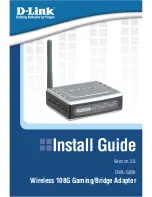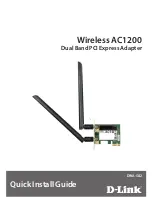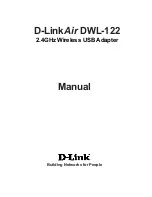
62
C
HAPTER
6: A
DVANCED
C
ONFIGURATION
3
In the Name field, enter a name for this remote destination, such as the name of
the location of the office. You may want to add an additional description if you
have more than one account with this private network.
4
In the Telephone Number 1 field, enter the telephone number you must dial in
order to reach this remote office.
5
In the
Alternate Number field, you can either enter an alternative number or, if
required by this private network, a second telephone number to establish a
Multilink PPP call.
To enter a second, alternative telephone number for this private network that will
be automatically dialed (if, for example the first number is busy) select
Alternate
and then enter the telephone number in the Number field.
If your private network requires that you dial two telephone numbers to establish
a Multilink PPP call, select
Multilink
from the drop-down list box and then enter
the telephone number in the Number field.
6
Under Security, enter your User ID and password.
7
Under DNS IP Address(es), if this private network uses static IP addresses (that is,
these IP addresses are not supplied when a dial-up connection is established) enter
the primary DNS IP address of your private network in the
Primary field. If there is
a secondary address, enter it in the Secondary field.
8
Specify Bandwidth Allocation.
■
Use one B channel:
When selected, one B channel is used to connect to
this service provider.
■
Add second B channel as required:
When selected, the second B channel
is added when the first B channel reaches a certain threshold. The threshold
default is 60%. To change the threshold default, refer to
“Changing Data
Call Parameters.
” The second B channel is temporarily removed when you
place or answer another call.
■
Use two B channels:
When selected, both B channels are used to connect
to this service provider (that is, always use Multilink PPP). Note that this
prevents another call, data or voice to be placed or received as there is no
available bandwidth (that is, the second B channel cannot be temporarily
removed).
9
Under Private Network Parameters, enter the IP address
,
subnet mask and domain
name of the private network. You must enter an IP address and subnet mask.
10
Under Miscellaneous, if you want to be able to access the Internet from this
private network, select the
Yes, I want to access the Internet
radio button.
Otherwise, select the
No
radio button.
11
Under Miscellaneous, specify the B channel rate or select TollMizer.
Leave the B channel rate set to 64 Kbps unless your telephone company and the
locations to which you will be connecting require 56 Kbps.
TollMizer makes a 56 Kbps data call over a voice circuit, allowing you to save the
typical cost difference between a voice and data call. Note that the destination
you are calling must also support this feature (also referred to as Switched 56
Permissive or Data Over Voice). Check with your telephone company and ISP to
make sure that they support TollMizer.
Summary of Contents for OfficeConnect Series
Page 15: ...16 CHAPTER 1 INTRODUCTION ...
Page 41: ...42 CHAPTER 4 SETTING UP TCP IP FOR WINDOWS AND MACINTOSH ...
Page 81: ...84 CHAPTER 7 SUPPLEMENTARY VOICE CALL SERVICES ...
Page 87: ...90 CHAPTER 8 PLACING RECEIVING AND DISCONNECTING CALLS ...
Page 107: ...110 APPENDIX A NETWORKING PRIMER ...
Page 111: ...114 APPENDIX C ISDN LAN MODEM FACTORY DEFAULTS ...
Page 123: ...126 GLOSSARY ...
Page 129: ......
















































